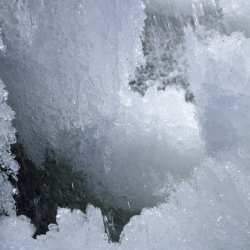
Arctic sea ice may be more resilient than many observers recognize. While global warming seems to have set the polar north on a path to floe-free summers, the latest data from Europe’s Cryosat mission suggests it may take a while yet to reach those conditions. The spacecraft observed 7,500 cu km of ice cover in October when the Arctic traditionally starts its post-summer freeze-up.
This was only slightly down on 2013 when 8,800 cu km were recorded. Two cool summers in a row have now allowed the pack to increase and then hold on to a good deal of its volume. And while the ice is still much reduced compared with the 20,000 cu km that used to stick around in the Octobers of the early 1980s, there is no evidence to indicate a collapse is imminent.
"What we see is the volume going down and down, but then, because of a relatively cool summer, coming back up to form a new high stand," said Rachel Tilling from the UK’s Nerc Centre for Polar Observation and Modelling (CPOM) at University College London (UCL).
"So, what may be occurring here is a decline that looks a bit like a sawtooth, where we can lose volume but then recover some of it if there happens to be a shorter melt season one year," she told BBC News.
